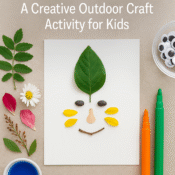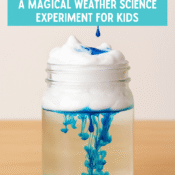
Global Toilet Science: From Roman Aqueducts to Space Toilets
When Plumbing Becomes a Portal to the Past—and Future
We don’t usually associate toilets with science, let alone with adventure. But in fact, the way different cultures solve the challenge of water flow and hygiene tells a powerful story of human ingenuity. From the elegant engineering of Roman aqueducts to the zero-gravity toilets on the International Space Station, toilets are where physics, biology, history, and culture meet.
In this edition of World Culture Explorers, we’ll investigate two epic toilet-related experiments and explore why plumbing may be the most underappreciated technology in world history.
Why It Matters: The Global Challenge of Sanitation
More than 3.6 billion people worldwide still lack access to safely managed sanitation, according to the WHO. That’s nearly half the planet. Toilets aren’t just about comfort—they’re about health, environmental protection, and dignity.
Understanding how water moves (and how waste is removed) gives children real-world context for science. These hands-on activities help kids see water management not just as engineering, but as a global challenge.
Engineering Through Time: The Roman Siphon
Activity 1: Rebuilding a Roman Aqueduct with Siphon Action
Objective: Recreate how ancient Roman engineers used gravity and siphon systems to move water uphill or across long distances.
Materials:
- Clear plastic tubing (1–2 metres)
- Two containers (one higher than the other)
- Water with food colouring (optional)
- Clay or modelling dough (to secure openings)
Steps:
- Fill the higher container with water and place the lower container on the ground.
- Submerge the tubing entirely in water until no bubbles remain.
- Clamp one end, transfer it to the lower container, and release.
- Watch water flow from high to low—gravity plus pressure does the work.
What to Discuss:
- How did Roman engineers achieve water flow over hills?
- What happens if the outlet is higher than the water level?
- Why was this design revolutionary for its time?
Life Without Gravity: Space Toilets & Liquid Control
Activity 2: Zero-Gravity Liquid Challenge
Objective: Simulate the problem of managing liquids in a low-gravity environment like the ISS.
Materials:
- Clear bottle with cap
- Flexible straw or pipette
- Cotton balls, sponge or absorbent cloth
- Paper for observations
Steps:
- Fill bottle halfway with water.
- Using only suction and capillary action, try to draw water out without tilting.
- Insert cotton balls to observe absorption vs splashing.

What to Observe:
- Why is gravity important in our toilets?
- How do astronauts solve problems of floating waste or water?
- What materials help absorb or direct liquids in space?
Quick Alternatives
Short on time? Try these mini-challenges to build curiosity:
- Bacteria Watch: Swab different surfaces (e.g., bathroom handle, sink, kitchen bench), place on homemade agar plates, and observe colony growth.
- Water Saver Invention: Using recycled items, design a device that reduces toilet water usage per flush.
These fast builds can open discussion about hygiene, water usage, and innovation.
Extend the Learning
To continue exploring toilet-related tech and history:
- Watch animated videos on how sewer systems work
- Visit a museum exhibit on ancient Roman or Indus Valley engineering
- Challenge kids to track their daily water use and find ways to reduce
Suggested books:
- Poop Happened! by Sarah Albee
- Whoosh! A Watery World of Waste by Emily Montague
Don’t Underestimate the Toilet
From ancient cities to orbiting space labs, toilets represent the best of practical design—and the reality of human life. These activities show kids that even the “gross stuff” can be fascinating, educational, and even inspiring.
Stay tuned for more adventures in cultural science next week as we explore the architecture of homes around the globe!
Free Downloads
Global Toilet Science Activity Pack (PDF)
- Roman Siphon Experiment Diagram
- Space Toilet Liquid Control Challenge Sheet
- Quick Cards: Bacteria Swab + Water Saver Build





[…] to the world of Color-Coded Science Challenges — where every experiment begins with a hue and ends with a hands-on […]